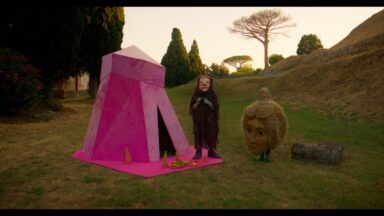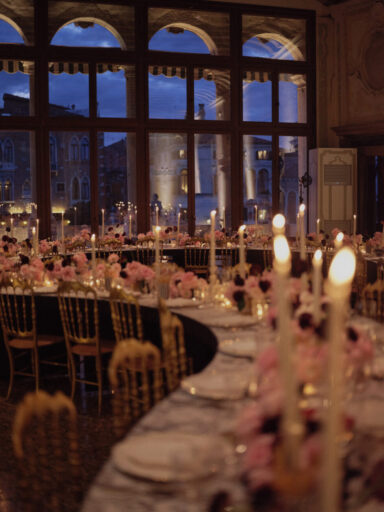Anshim, balikwas, dadirri, friluftsliv, gurfa, ohana, orenda, sisu, and ubuntu. These are the nine words explored by the latest exhibition of the Milan-based artist: a dialogue between art, language, and Italian craftsmanship
Text by: Gilda Bruno
Inaugurated on March 31st and running until June 27 at Maison Tavel Musée d’Art e d’Histoire, Geneva, Switzerland, “La ragione nelle mani” (The reason in the hands) is Stefano Boccalini’s newest showcase. Curated by internationally-renowned Adelina von Fürstenberg, the exhibition stems from a collaboration with ART for THE WORLD EUROPE and is the first one of the numerous initiatives that are set to be launched under the same project in the coming months. The list of future partners involved includes Art House (Scutari, Albania), Sandefjord Kunstforening (Sandefjord, Norway), Pistoletto Onlus Foundation, Fine Arts Academy of Bologna, MA*GA – Art Museum Gallarate, and GAMeC – Modern and Contemporary Art Galery Bergamo to name a handful.

Mani che intrecciano legno nocciolo, La Ragione nelle mani, Stefano Boccalini, Copyright Emanuel Montini
For this occasion, Boccalini has centered his practice around the concept of “biodiversity” to stress the importance of preserving local traditions of remote areas such as Valle Camonica (Camonica Valley). In order to do so, the artist has teamed up with four artisans from this territory, assisted in turn by two apprentices each, for the production of a new art series. The eight assistants were the winners of a public competition published by Comunità Montana and designed for youth interested in Camunian handcraft techniques; an inestimable cultural heritage now threatened by the increasing spread of automation in the manufacturing industry.

La ragione nelle mani, Orenda, Stefano Boccalini, 2020, lana cotta, Pezzotti (tappeti), 60 x 235. In the language of North American Indigenous people, “The human ability to change the world against adverse fate.” Copyright Christian Tasso
The artifacts on display include a refined piece of embroidery, two expertly carved walnut planks of wood, five hazelnut wood artworks woven together so as to form one unique piece, and three ‘pezzotti,’ carpets made with woven fabrics on a manual loom, for a total of nine exhibited artworks. Each of the pieces composing the showcase represents words that, only existing in one specific language, refer to the relationship linking nature and human beings as well as that one among people. The words were shortlisted through a workshop that made all children of Monno, Brescia, dive into the meaning of over a hundred different words that cannot be translated because of their intrinsic uniqueness. Twenty words were then chosen and presented to the artisans who, in a joint effort with artist Stefano Boccalini, picked the ones to spotlight through their craft.

Artigiano intagliatore, La Ragione nelle mani, Stefano Boccalini, Copyright Emanuel Montini
The theme of the showcase comes as no surprise. As a matter of fact, “La ragione nelle mani” was developed by the artist as part of his long-lasting contribution to Comunità Montana di Valle Camonica which, alongside its Distretto Culturale (Cultural District), is among the winners of the 8th edition of the competition Italian Council; a programme promoted by Directorate-General for Contemporary Creativity of the Italian Ministry of Culture to support Italian contemporary art across the globe. Already in 2013, Boccalini had participated in a water-themed artistic residency that had given him the opportunity to become acquainted with the fascinating landscape of the Lombard Alps. Thanks to the many precious relationships established by the artist in Valle Camonica, in 2020 he also launched Ca’Mon, a community-based, Monno-headquartered cultural hub for mountain arts and crafts.

La ragione nelle mani, Sisu, Stefano Boccalini, 2020, lana cotta, Pezzotti (tappeti), 60 x 120. In Finnish, “Determination in the search for well-being in everyday life.” Copyright Christian Tasso
“The goal is to transmit knowledge according to a logic of sharing, so that tradition is not seen in a nostalgic way, but becomes a gateway into the future, a ‘place’ to experiment and find new scenarios,” the artist explained. But what is the message behind his latest showcase?
“We live in an era where words have become a real instrument of production, something capable of capturing an economic value,” he continued. “Words have, therefore, assumed an increasingly important role within today’s social context. Through their use, I try to give back a specific weight and collective value to language which, for me, is the ‘place’ where diversity plays a fundamental role, becoming the means by which to counter the economic value with the value ‘of the common.’”

Boccalini e il legno intrecciato, La Ragione nelle mani, Stefano Boccalini, Copyright Emanuel Montini
“In Boccalini’s work, the artist creates a biodiversity of concepts stemming from linguistic minorities. The works derive solely from the importance of the meaning of the words employed, although the material means and techniques through which those words are rendered also play a crucial role,” curator Adelina von Fürstenberg commented on “La Ragione Nelle Mani.”
“The project was born from the constructive conviction that identifies in the traditional Valle Camonica craftmanship the origin of a truthful aesthetic experience. An experience similar to the one artists from the Bauhaus were looking for back in 1919, when Walter Gropius, wanting to bring art to dialogue with artisanal aesthetics, stressed the value of such a practice in the movement’s inaugural manifesto, “Architects, sculptors, painters, we must return to craftsmanship!”
You can visit “La Ragione Nelle Mani” at Maison Tavel, Geneva, until June 27.


